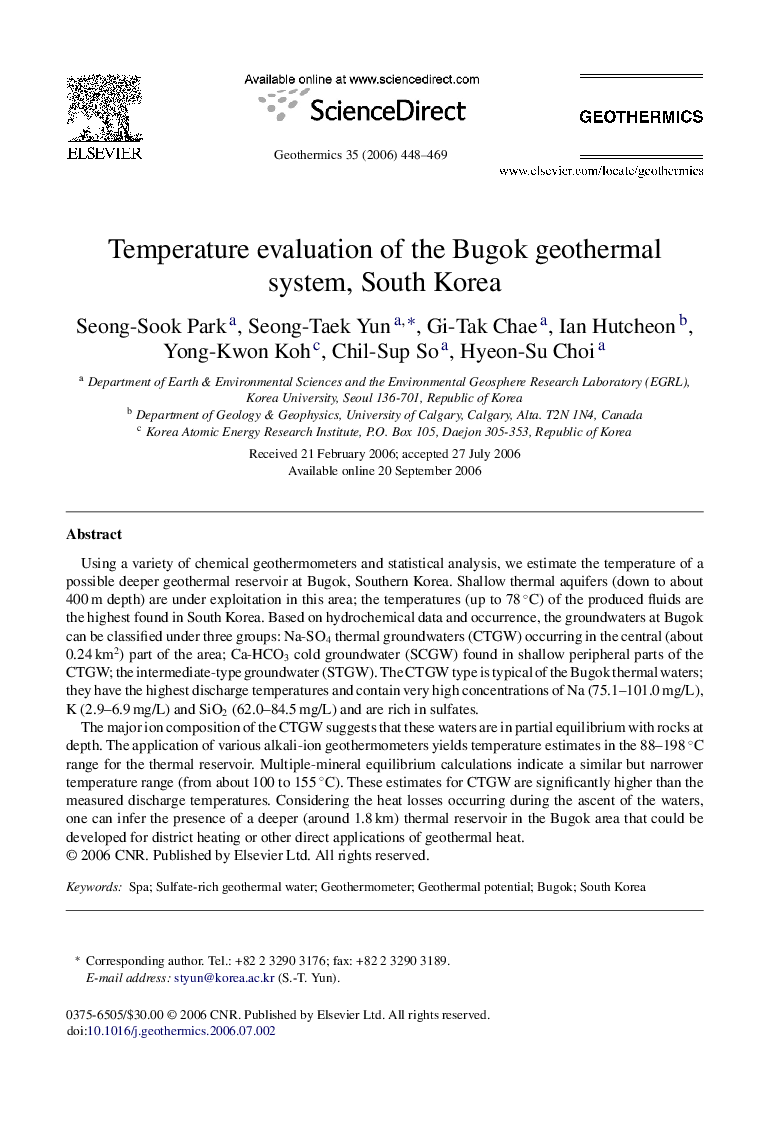| کد مقاله | کد نشریه | سال انتشار | مقاله انگلیسی | نسخه تمام متن |
|---|---|---|---|---|
| 1742641 | 1017704 | 2006 | 22 صفحه PDF | دانلود رایگان |

Using a variety of chemical geothermometers and statistical analysis, we estimate the temperature of a possible deeper geothermal reservoir at Bugok, Southern Korea. Shallow thermal aquifers (down to about 400 m depth) are under exploitation in this area; the temperatures (up to 78 °C) of the produced fluids are the highest found in South Korea. Based on hydrochemical data and occurrence, the groundwaters at Bugok can be classified under three groups: Na-SO4 thermal groundwaters (CTGW) occurring in the central (about 0.24 km2) part of the area; Ca-HCO3 cold groundwater (SCGW) found in shallow peripheral parts of the CTGW; the intermediate-type groundwater (STGW). The CTGW type is typical of the Bugok thermal waters; they have the highest discharge temperatures and contain very high concentrations of Na (75.1–101.0 mg/L), K (2.9–6.9 mg/L) and SiO2 (62.0–84.5 mg/L) and are rich in sulfates.The major ion composition of the CTGW suggests that these waters are in partial equilibrium with rocks at depth. The application of various alkali-ion geothermometers yields temperature estimates in the 88–198 °C range for the thermal reservoir. Multiple-mineral equilibrium calculations indicate a similar but narrower temperature range (from about 100 to 155 °C). These estimates for CTGW are significantly higher than the measured discharge temperatures. Considering the heat losses occurring during the ascent of the waters, one can infer the presence of a deeper (around 1.8 km) thermal reservoir in the Bugok area that could be developed for district heating or other direct applications of geothermal heat.
Journal: Geothermics - Volume 35, Issue 4, August 2006, Pages 448–469